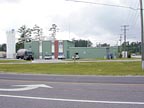
The interim voluntary guidance documents provide drinking water, wastewater and stormwater utilities with practical assistance for implementing improved security measures in new and existing facilities of all sizes, addressing risks from managerial, operational, construction and design perspectives. The water sector industry will benefit from these documents by gaining insight into utilities' present and future needs, which will help to mitigate risks associated with intentional attacks and natural disasters.
The interim voluntary guidelines were developed by the American Water Works Association (AWWA), the Water Environment Federation (WEF) and American Society of Civil Engineers (ASCE). Interim Voluntary Security Guidance for Water Utilities (developed by AWWA), Interim Voluntary Security Guidance for Wastewater/Stormwater Utilities (developed by WEF) and Interim Voluntary Guidelines for Designing an Online Contaminant Monitoring System (developed by ASCE) are available on each organization's Web site as follows: www.awwa.org, www.wef.org and www.asce.org.
“Americans should feel confident, when they turn on the tap, they have access to some of the cleanest, safest water in the world,” says Benjamin Grumbles, acting assistant administrator for water, EPA. “I am pleased to stand with our partners - the American Society of Civil Engineers, the Water Environment Federation and the American Water Works Association - who are helping with our mission, working to ensure the security of our nation's water sector infrastructure.”
“Our society depends on a safe and reliable water supply, not only for human consumption but also for other needs such as industry, agriculture and even fire protection,” says Pat Natale, executive director for ASCE. “These new security guidelines will help water utilities take the necessary steps to ensure the safety and quality of our water supply for domestic and commercial use in light of the potential of both natural and man-made disasters.”
“The development and implementation of these guidelines represent an important component of WEF's overall commitment to assisting water and wastewater utilities enhance their security capabilities,” adds Bill Bertera, executive director for WEF. “The Federation is pleased to be part of this distinguished team of professional organizations as we continue our mission of protecting public health through the preservation of the global water supply.”
“The guidance encompasses the ideas and experience of some of the very best minds in the water community,” stresses Jack Hoffbuhr, AWWA's executive director. “Utilities now have a comprehensive tool to help them address security considerations from design, managerial and operational perspectives.”
Following the events of Sept. 11, U.S. water, wastewater and stormwater utilities analyzed existing security measures with renewed focus on the possibility of intentional attack. Drinking water utilities serving more than 3,300 persons have completed vulnerability assessments and emergency response plans as required by the 2002 Public Health Security and Bioterrorism Preparedness and Response Act.
Interim Voluntary Security Guidance for Water Utilities and Interim Voluntary Security Guidance for Wastewater/Stormwater Utilities provide information for designers and owner/operators of drinking water and wastewater/stormwater facilities on design upgrades that improve physical security and management and operating practices to reduce vulnerabilities due to malevolent events. The guidance documents address such issues as risk assessment, threat analysis, financial and communications planning, human resources management, operational maintenance and emergency response strategy.
Interim Voluntary Guidelines for Designing an Online Contaminant Monitoring System provides information on designing online contaminant monitoring systems, including assessing the need for a monitoring system, locating instruments and sensors, and responding to suspected contamination events.
Training and outreach materials for each of the guidelines are currently being developed and will be available this spring. The guidance documents, along with feedback from industry professionals and additional research, will be the basis for the development of voluntary consensus standards, to be published in late 2006.

Report Abusive Comment